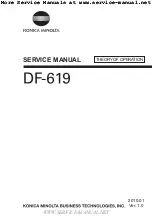
Features and Use
2–5
Using the monitor
Monitor checkout
Always check the operation of the monitor before using it to monitor a patient.
WARNING: Do not use the monitor if the startup tones do not sound, the
validity of data is questionable, or if the monitor fails to function as
described. Refer to the appropriate sections of this manual to identify and
correct the malfunction.
1.
Plug the power supply cable into the power connector on the monitor. Then, connect
the power supply to the power outlet.
Important
: When using the monitor for the first time or after removing it from
extended storage, charge the battery for three hours BEFORE you power ON.
2.
Press the power button to power ON.
Verify the following during startup:
•
The power-on tones sound.
•
All display elements, including on-screen symbols, illuminate briefly.
•
The alarm LED is lit red, then yellow.
•
The backlight is ON until dashes are displayed for the SpO
2
and pulse rate. The
backlight remains ON if it is set to ON.
•
(Trend Download option only) A patient number (P01, P02, etc.) is displayed.
3.
Power OFF and check the line power filter setting shown in the high pulse rate alarm
area:
50
(Hz) or
60
(Hz). If the setting matches your local line power frequency, go to
the next step. If it is different, go to
Changing the line power filter
later in this chapter.
4.
Choose a sensor designed for use on a finger, place it on your finger, and connect it
to the monitor. Power ON the monitor.
NOTE: All pleth bar segments pulsate until the measured values are displayed.
5.
When the SpO
2
and pulse rate values are displayed, verify that the lowest pleth bar
segment remains visible while one or more of the other segments pulsate.
6.
Remove the sensor from your finger. Verify that the alarm LED flashes red, an alarm
tone sounds, and dashes replace the SpO
2
and pulse rate values.
7.
Place the sensor on your finger again. After the SpO
2
and pulse rate values are
displayed, unplug the sensor from the monitor. Verify that the alarm LED flashes red,
an alarm tone sounds, and dashes replace the values.
8.
Check the battery indicator. If the battery is low, recharge the battery before using
the monitor.
Important
: If the startup tones do not sound or if the monitor fails to function as
described, DO NOT use the monitor until the malfunction has been corrected. Refer to
Troubleshooting
later in this manual.
Summary of Contents for TruSat
Page 1: ...GE Healthcare TruSat Pulse Oximeter User s Guide...
Page 2: ......
Page 3: ...GE Healthcare TruSat Pulse Oximeter User s Guide 6050 0006 815 March 2005...
Page 8: ......
Page 30: ......
Page 42: ......















































